Day 43: Dunhuang -> Shan Shan (鄯善)
I have never had such a hard time riding in a straight line as I have today. The route through Xinjiang is a very straight, reasonably high quality highway, but is in my mind, one of the most dangerous routes I’ve ridden thus far.
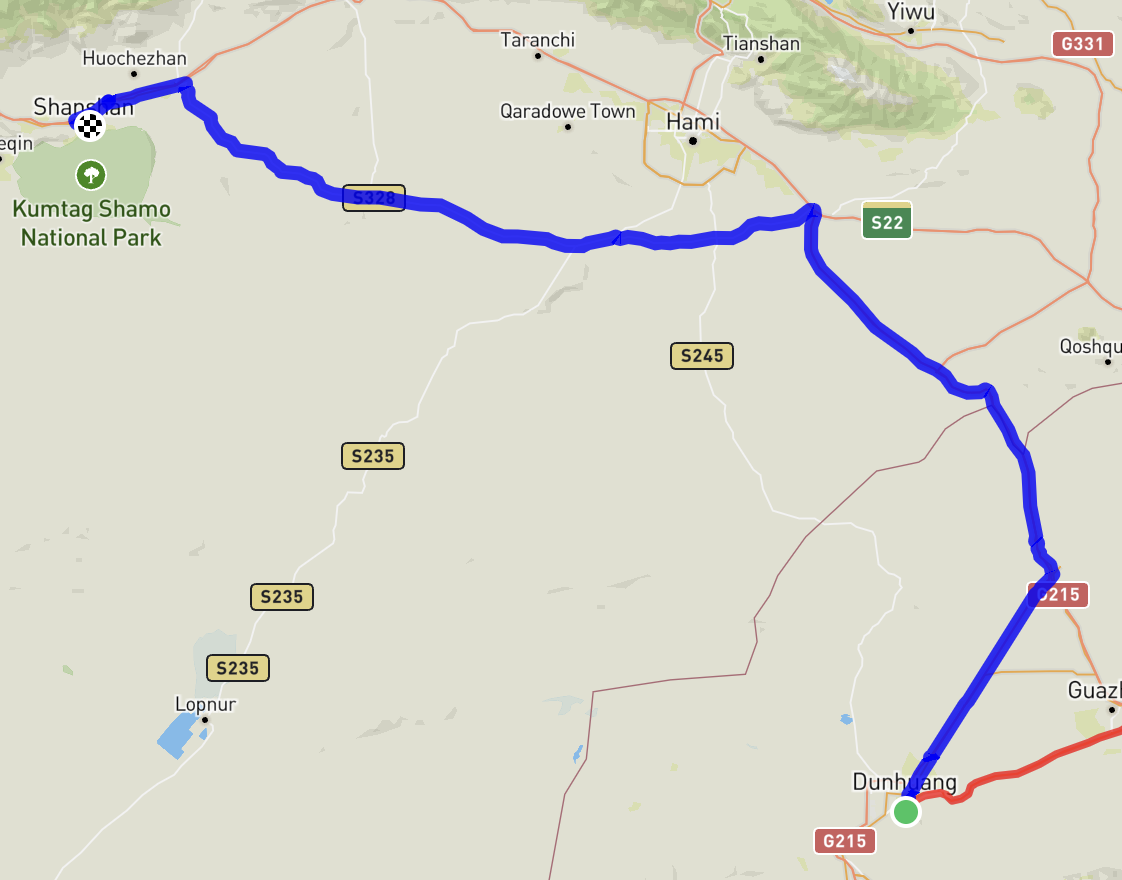 Today’s route in blue
Today’s route in blue
Today’s ride is likely the longest (planned) day I’ve had this entire time; 750KM from Dunhuang to Shan Shan in Xinjiang. I set off at ~10am with intentions to also explore a national park en route, that was recommended by the driver from yesterday. With a guide and a driver (and accompanying car, by regulatory requirement), I’ve given all my luggage save my tank bags and crash bar bags to the driver, so it is a bit more fuel efficient and less tiring to ride. Quite nice to effectively have a support vehicle in tow (and very helpful with planning, police etc), but definitely not the cheapest thing to organise.
As soon as I hit the road, I was keen to make distance quickly, so I would have more time to explore the National Park. This was supposed to have large canyons, and some nice offroad parts, and was somewhat on the route. The road was straight, the temperature was warm, and there was almost no one else around. This meant a fast pace and cruise control, and I’d have my rest stops while my guide caught up.
But then I discovered the reason why Xinjiang is one of the most renewable energy dense regions in the world. Extreme, gale force winds. This was a first for me - I’ve ridden in rain, (light) snow, and extreme heat. But I’ve never had such strong winds as experienced today.
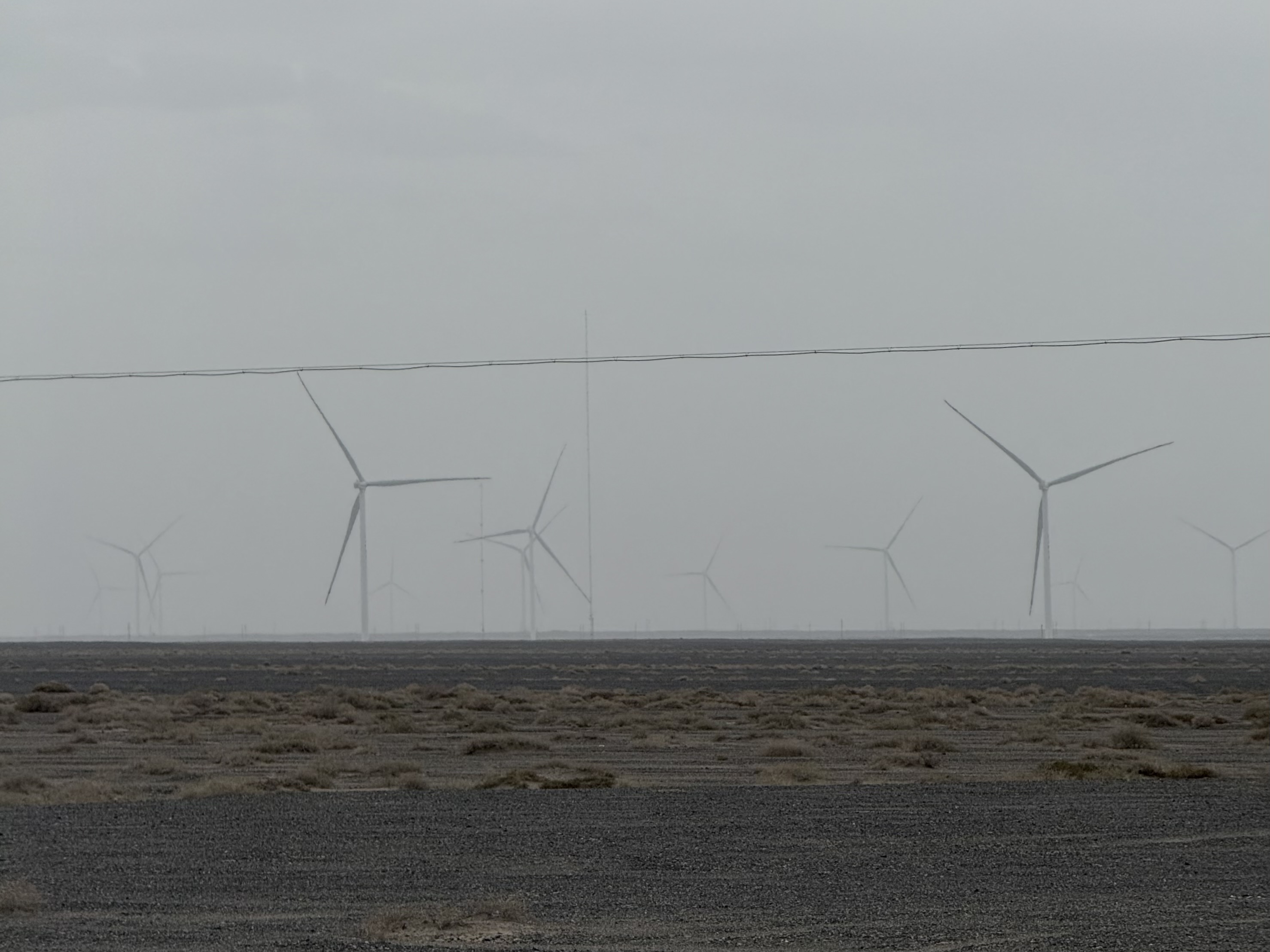 Where there are wind farms there are strong winds
Where there are wind farms there are strong winds
In these conditions, riding a straight road means riding at a reasonable lean (leftward in my case) to keep the line pointing straight. The wind is strong enough to push an unprepared rider across two lanes very quickly - into a fence or off the road entirely (I had heard a story of a rider who was blown off a road into a ditch in Xinjiang the other day).
The thing about wind is that it is semi-invisible, and its motion is impacted by the environment around you. Unless you are looking for clues, you will not have a good sense for it. It means adjusting for variations in wind, and when there are small rocks/mountains/trucks/bridges/guardrails, adjusting for the turbulence and impact there is to the airflow. For example, riding past small bridges would result in a huge gust of wind each time, enough to push me a lane(on a two lane road) if not braced. Riding past trucks when there is a strong wind that you are already braced against, results in a one-two punch of wind where:
- as you begin to overtake the truck, the airflow becomes turbulent and there is a relative weak patch of airflow (and you are braced for strong winds, so you move in the direction you braced)
- during the overtake, you correct this, and unbrace to move normally
- as soon as you edge in front of the truck, you are hit by a strong gust of wind (that feels like a punch) that would blow you a lane away if unprepared. These lessons I thankfully learned in the morning, where traffic was light and winds were strong but not yet gale force. Because soon enough, industrial traffic piled up and wind forces picked up even more.
Before long I was putting these newly discovered principles to work, getting endlessly punched by wind after each overtake, trying to avoid getting blown into the centre guard rail, anticipating bridges and slowing down for them, and so on and so forth. It was quite tiring, because instead of the usual “look at the corner, know the riding conditions, pick your curve and go for it” style of riding, it was more like “look for trucks, small bridges, and any general on the side of the road, anticipate how strongly the wind is blowing, and how it may change when passing these features, brace for the changes in wind speed and turbulence as a function of these factors, otherwise risk being pushed somewhere you don’t want to be”.
Beyond the wind, the landscape itself had a sinister feeling to it. Low fog covered the horizons over relatively flat dirt and rock. Very little vegetation was growing, and life seemed scarce. When riding, the best comparison I could think of were to the swamps surrounding Mordor. Then it would transition to barren black and reddish brown mounds of rock, shrouded in fog, and alternated between these scenes during the first half of the ride.
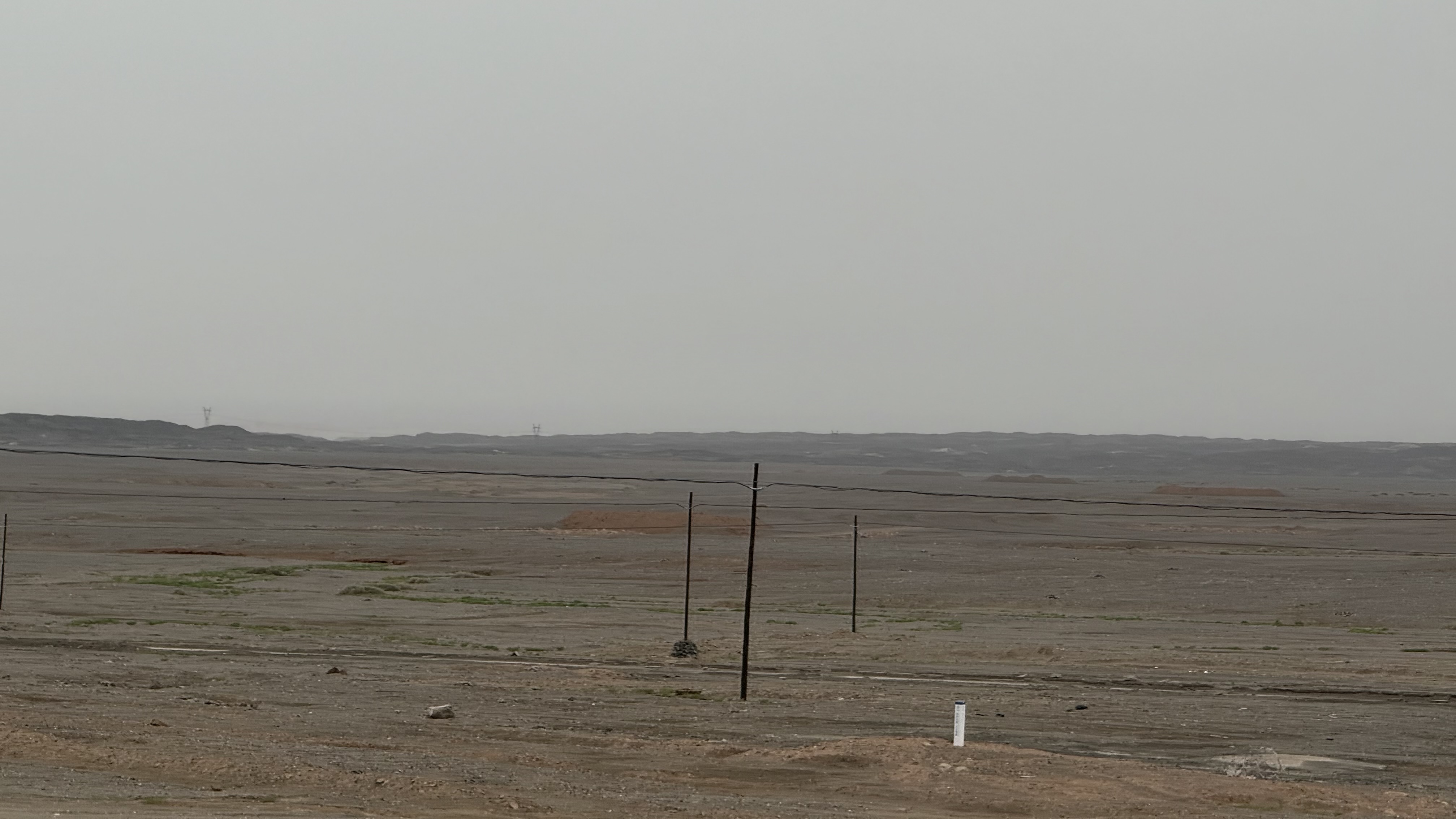 Xinjiang badlands
Xinjiang badlands
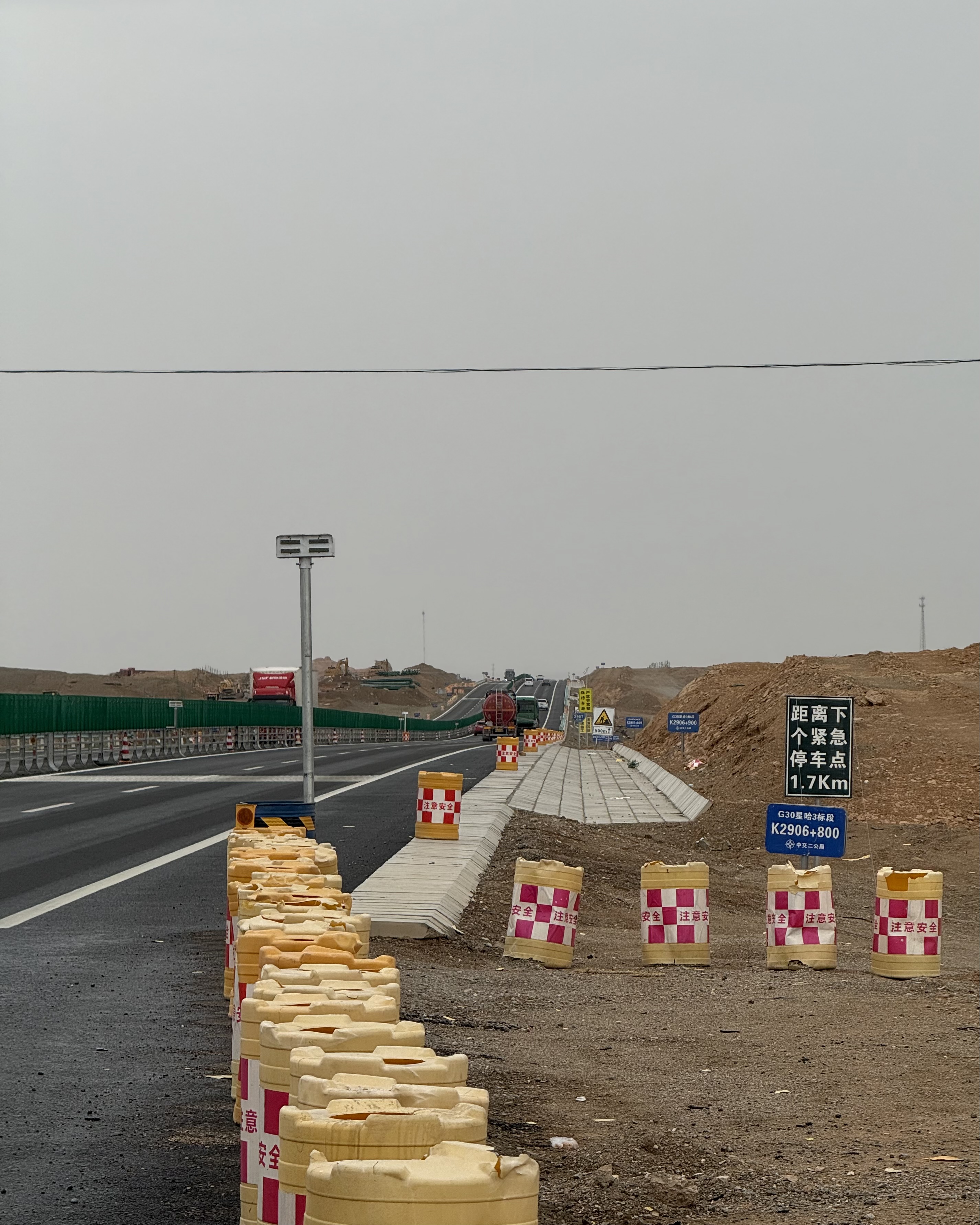 The highway is likely the only thing besides powerlines and wind farms for a long way
The highway is likely the only thing besides powerlines and wind farms for a long way
I was struck by how remote and inhospitable this landscape was - before highways and knowledge of what lay in the west, a traveler would have encountered the same as what I encountered today. Howling gales of wind, enough to make any sensible traveler turn back. A sense of foreboding in the landscape. Very few signs of life, water, etc. For hundreds (presumably thousands) of kilometres. I can see why they did not extend Imperial China beyond Jiayuguan! Add marauding nomadic tribespeople to the mix and that’s more than enough to keep me away.
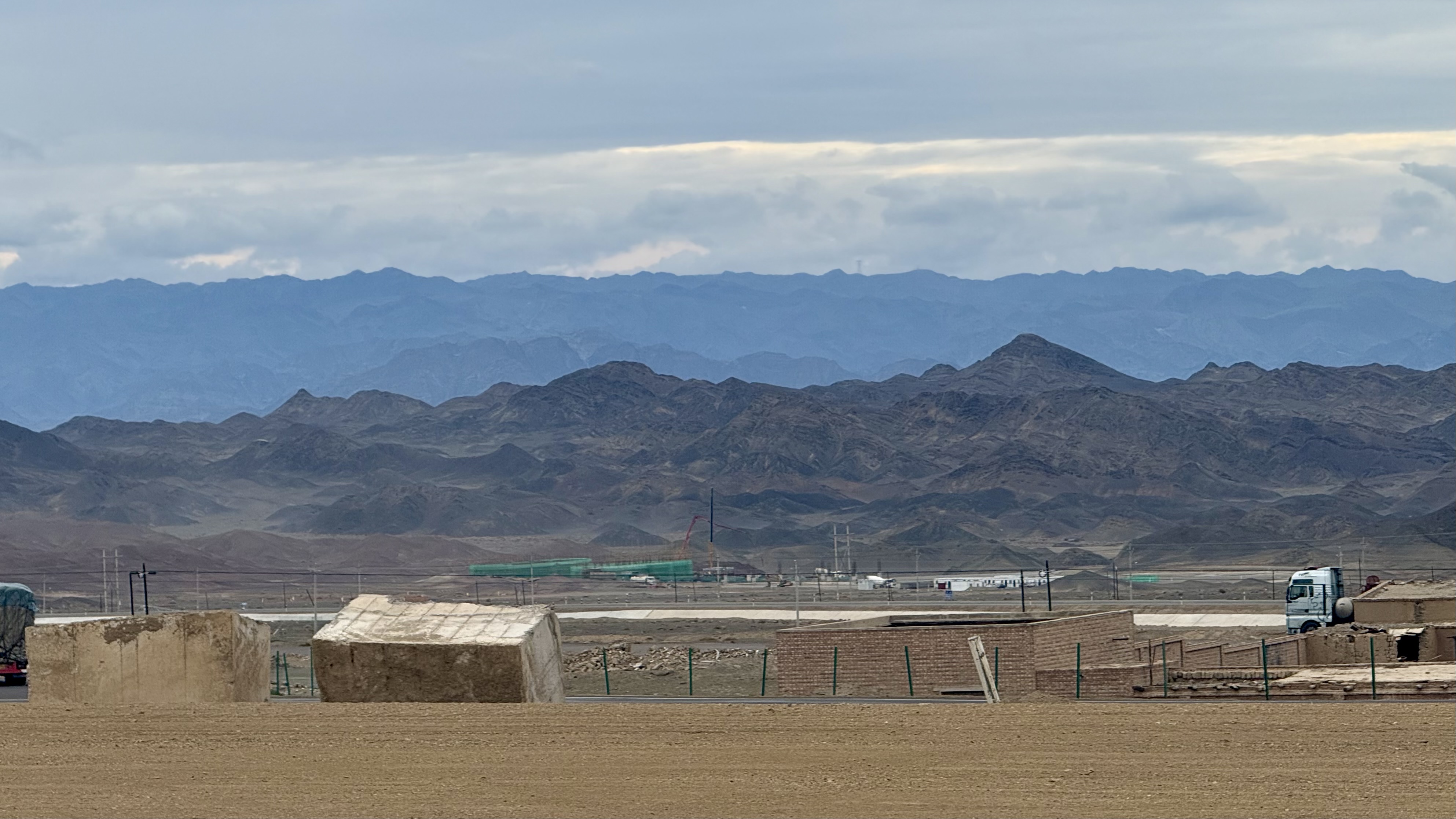 Rugged and windy mountains
Rugged and windy mountains
The small villages that I would ride by every so often were simply not present - just hundreds of kilometres of fog and rock. Every now and again, the odd industrial building appeared, and most of the traffic on the road was industrial traffic; huge trucks carrying wind turbines, pipes which looked like they would be used in oil and gas, tanks of chemicals, and covered loads.
There was also a significant increase in police presence. Every town that was passed has a police checkpoint where you must register your ID or passport. For me, that meant parking and stopping at the police station every few hundred kilometres. While the procedures were followed dutifully, the police were very kind and relatively warm. They all reminded me to ride slowly, to ride safely, to take breaks and watch out for high winds and the trucks, like a caring friend or relative might do. The police station even had comfortable seats and a vending machine for food/redbull etc for weary travellers to rest and recharge. Very different from police stations back home!
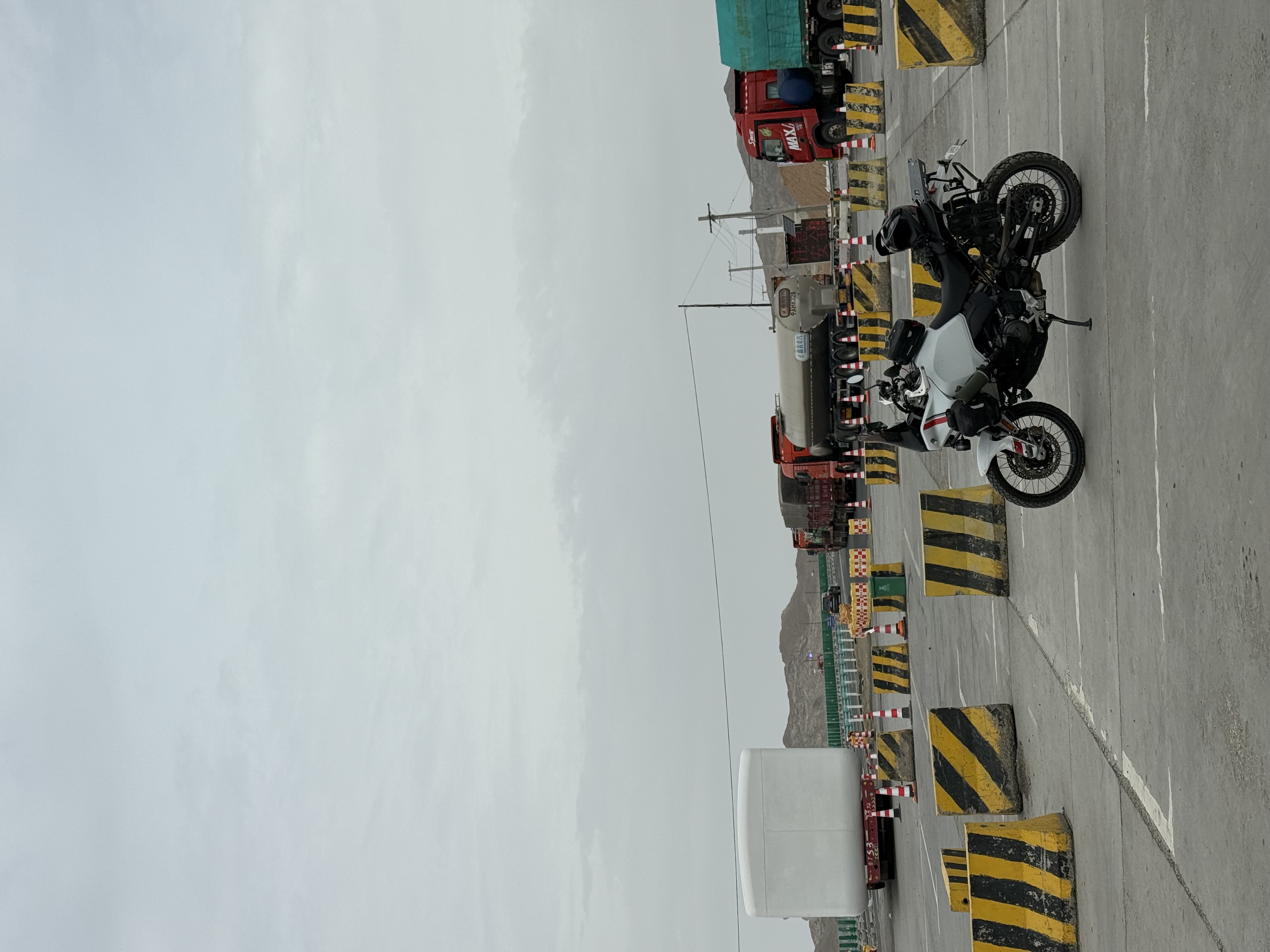 First police checkpoint
First police checkpoint
 Quite a cushy police station…
Quite a cushy police station…
Lunch was the first proper stop, and I arrived well ahead (about 45 mins) of the guide and driver, so ordered for all of us. It was also a decision point for the route today; as I’d been increasingly unsure about the detour through the national park - after the intensity of the winds and the long ride ahead. Then I checked the weather forecast. Rain starting at 2PM, and then increasing in intensity until evening. The thought of a wet, muddy 120kms through the National Park did not seem very appealing to me, so I decided to continue on by the highway to Shan Shan.
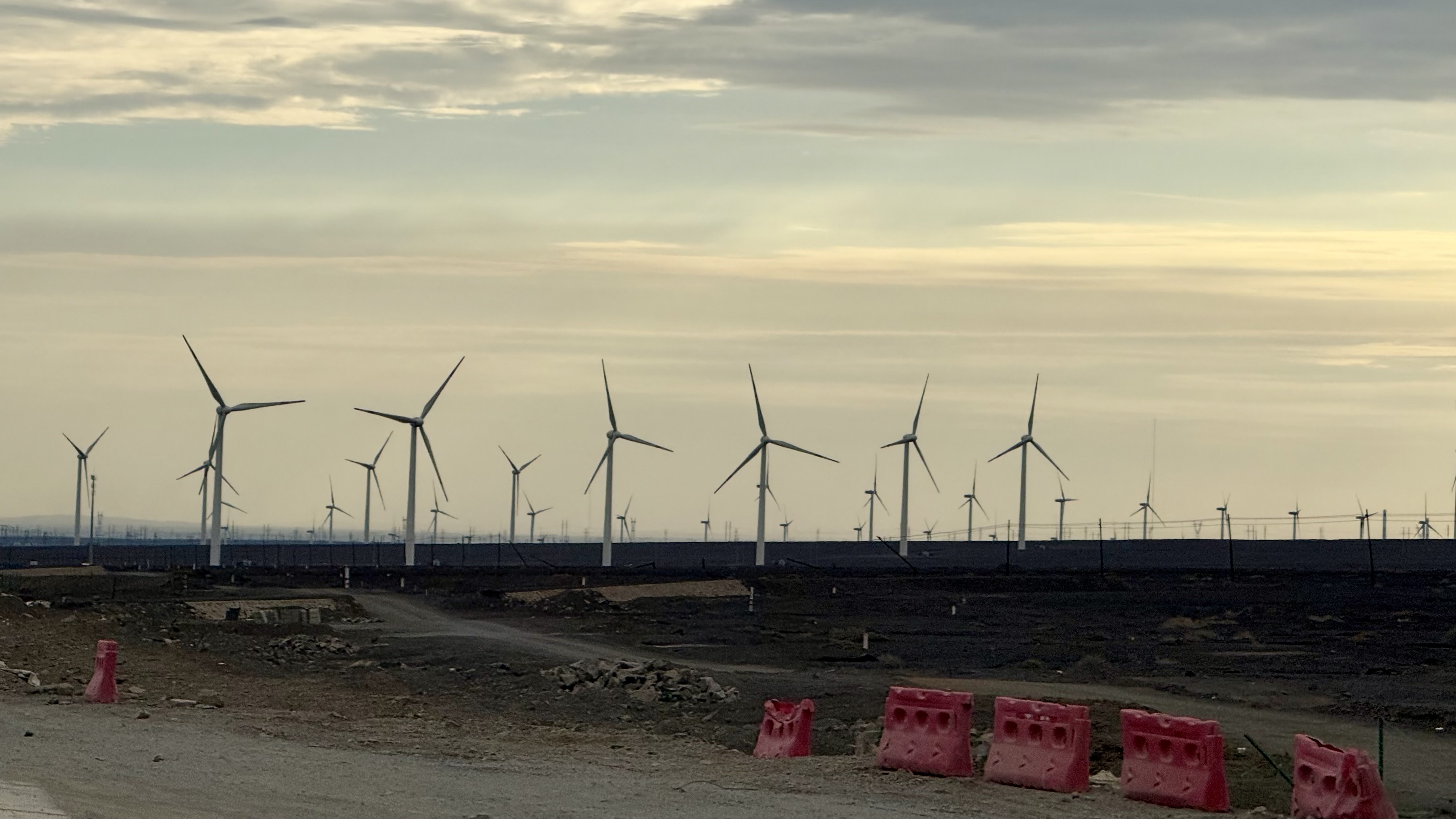 More windfarms
More windfarms
Later in the afternoon, one policeman that was special needs, very enthusiastically asked me to wait for the rain to stop by the side of the road. I think he was trying to be kind and considerate, but given the power dynamic (he has a post of authority, and I don’t want to mess around in a politically sensitive place), was a bit too insistent so I called my tour guide over to get me out of the situation. We eventually settled on an agreement that I would leave the police checkpoint (rather than waiting for the rain to subside) and ride to and stay in the next town about 40KM away. Thankfully as I left, the weather improved and I was able to continue on - although he called back at 10PM asking about how we’d been.
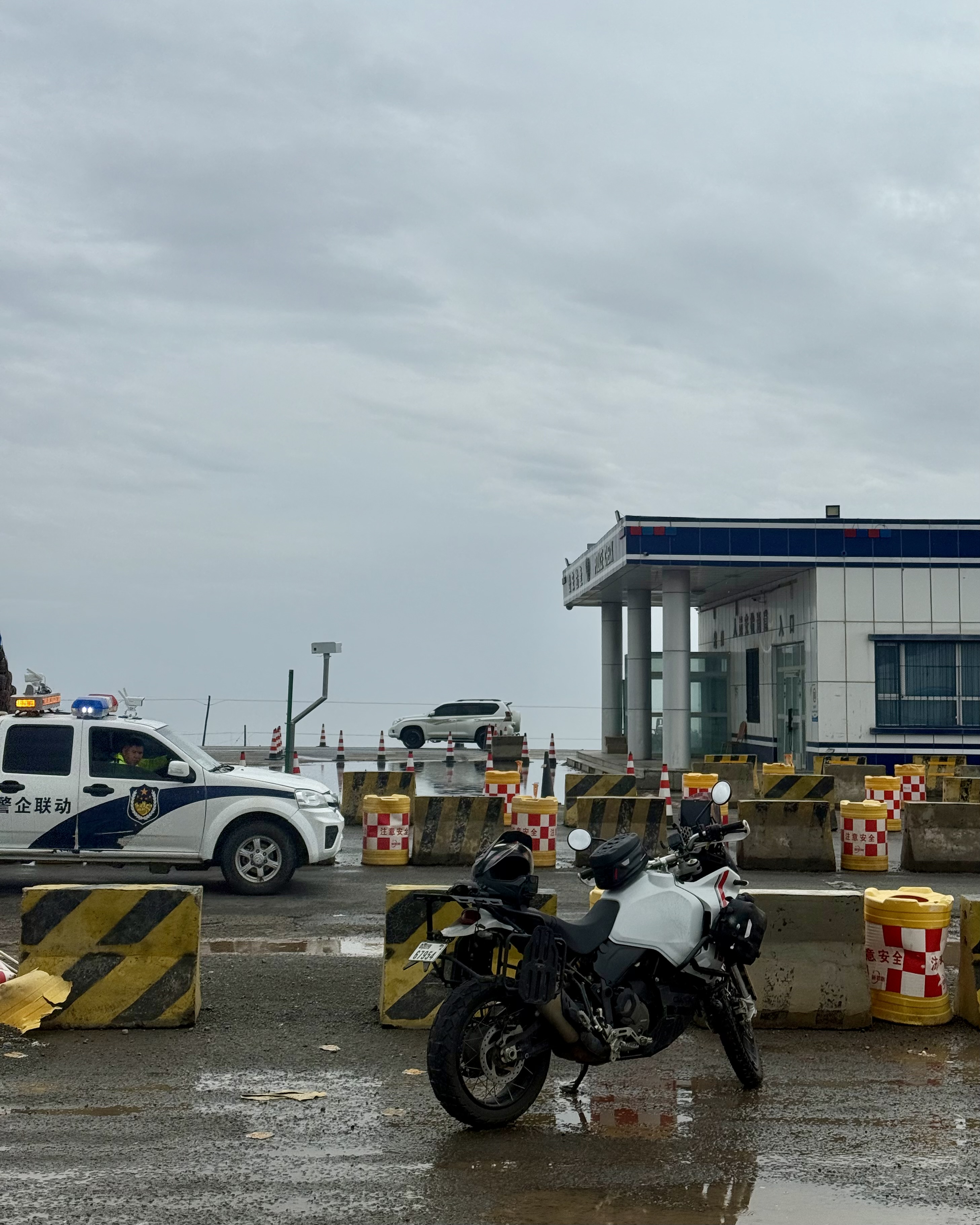 Police stop 3 (#2 with the special needs cop not pictured)
Police stop 3 (#2 with the special needs cop not pictured)
One of the reasons why a guide is necessary in Xinjiang is that the fuel stations do not allow non Chinese nationals to add fuel. This was enforced to varying degrees at fuel stations, and was something I found quite funny.
- At one station they didn’t check at all
- At another station the machine required an ID to be inserted, so the fuel clerks went all around the station asking drivers to borrow their ID. They were super impressed by my bike and me being Chinese but of a different nationality to them. Eventually they found a passenger who was happy to help.
- At one station, there was a boom gate that could only be opened when presented with an ID. The workaround when i revealed I was a foreigner, was to push my motorcycle (no riding allowed apparently?) past the boom gate to the pump, fill up, and then push it out of the station. I thought this was a bit harsh, until the attendants started helping me push!
After a long day of riding I made it to Shanshan at ~8PM. It seems to be another oasis town, and it’s the first time I have seen Uyghurs in person. They have a striking combination of Asian and western/Arabic features, and speak a language that is neither Chinese nor Arabic (i assume it is a Turkic language?), and have varying levels of fluency of mandarin (the youth tend to have good mandarin).
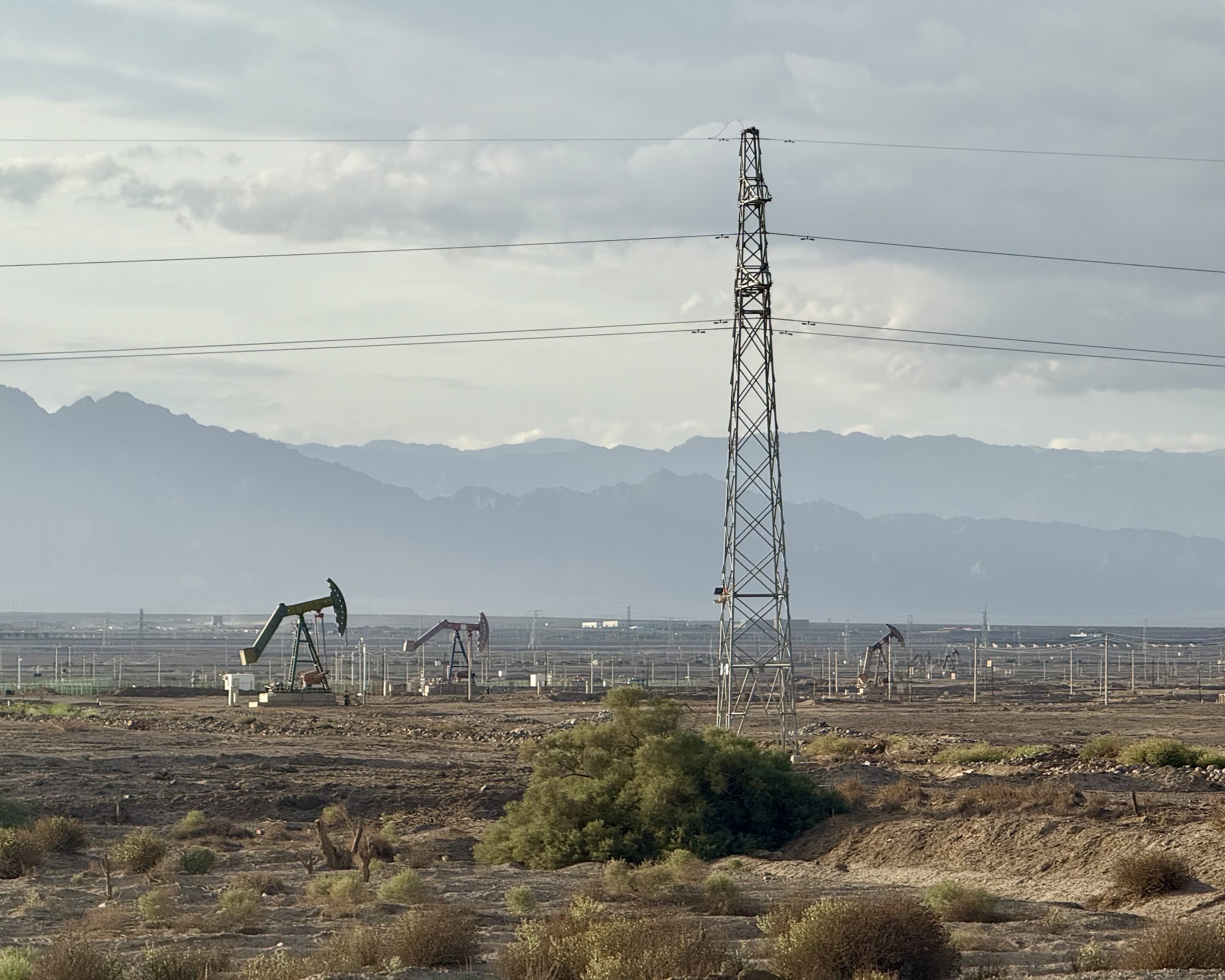 Oil wells in Shan shan
Oil wells in Shan shan
Tomorrow; Turpan!
Some stats:
- 749 KMs travelled
- 47.5L fuel added
- 6 unique interactions
- 25g coffee consumed
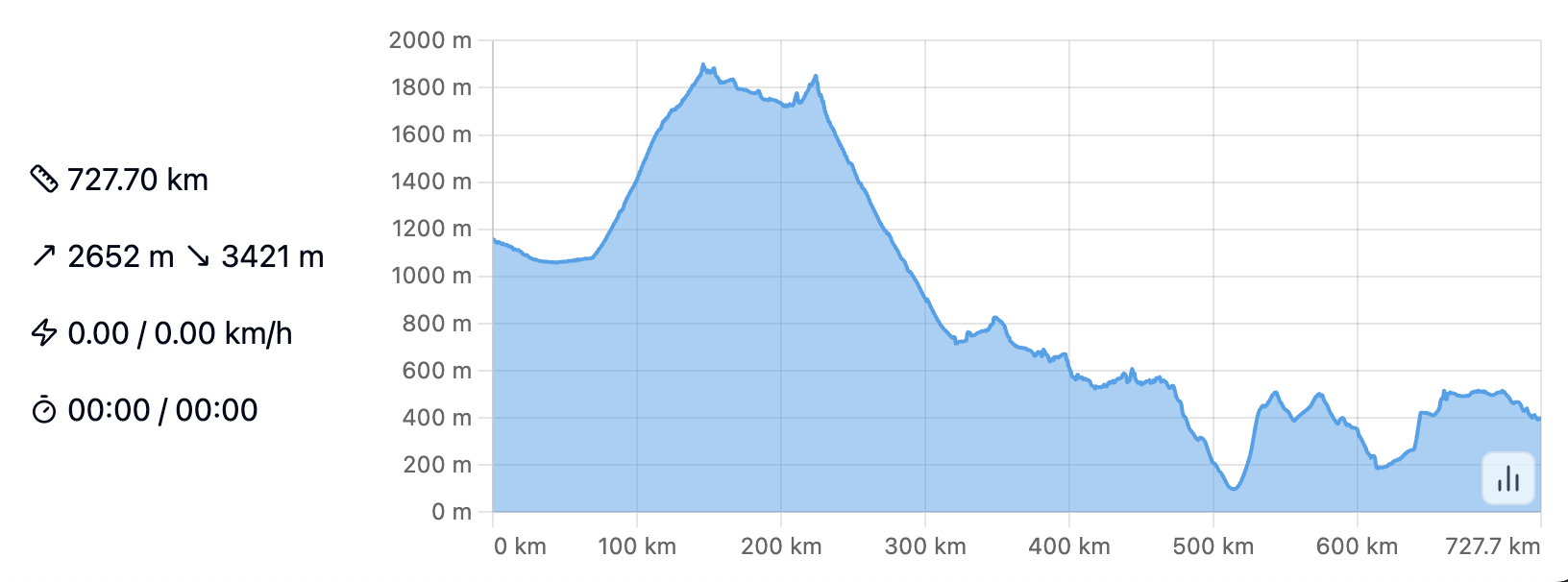 Altitude map of today’s ride
Altitude map of today’s ride
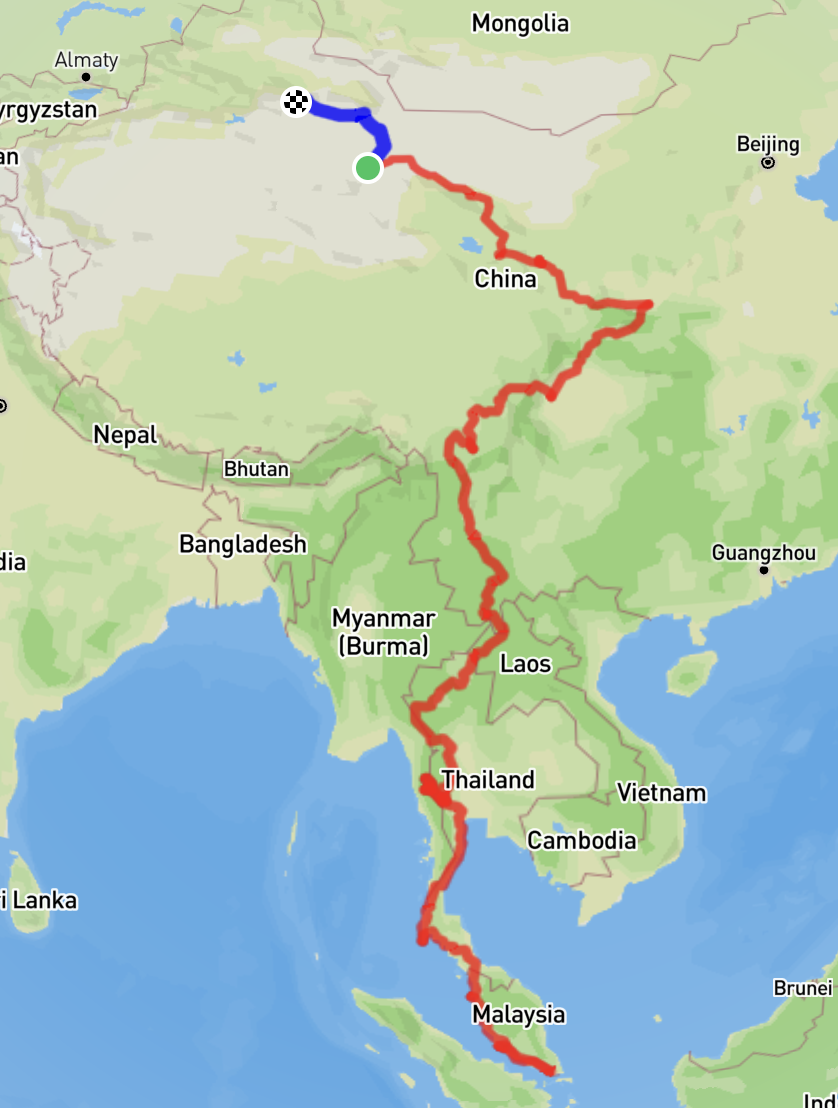 Route to date
Route to date